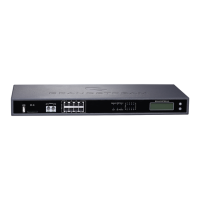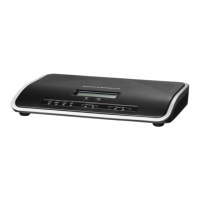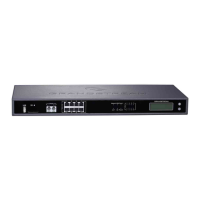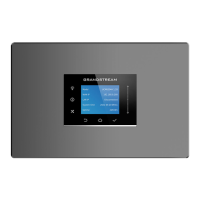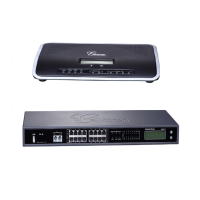P a g e | 233
UCM6510 IP PBX User Manual
Version 1.0.20.31
If enabled, fax signals from the trunk during a call will be detected.
Configures the destination of faxes.
Extension: Send the fax to the designated FXS/SIP extension
(fax machine) or a FAX extension.
Fax to Email: Send the fax as an email attachment to the
designated extension's email address. If the selected extension
does not have an associated email address, it will be sent to the
default email address configured in the Call Features Fax/T.38
Fax Settings page. Note: Please make sure the sending email
address is correctly configured in System Settings Email
Settings.
If enabled, the trunk name will be added to the caller id name as the
displayed caller id name.
If enabled, collect calls will be blocked.
Note 1: Collect calls are indicated by the header "P-Asserted-Service-
Info: service-code=Backward Collect Call, P-Asserted-Service-Info:
service-code=Collect Call".
Note 2: There is also a global setting for this option in the SIP Settings ->
General Settings page.
Manipulates Caller ID (CID) name and/or number within the call flow to help
identify who is calling. When enabled two field will show allowing to
manipulate the CallerID Number and the Caller ID Name.
Configures the pattern-matching format to manipulate the numbers of
incoming callers or to set a fixed CallerID number for calls that go through
this inbound route.
${CALLERID(num)}: Default value which indicates the number of an
incoming caller (CID). The CID will not be modified.
${CALLERID(num):n}: Skips the first n characters of a CID number,
where n is a number.
${CALLERID(num):-n}: Takes the last n characters of a CID number,
where n is a number.
${CALLERID(num):s:n}: Takes n characters of a CID number
starting from s+1, where n is a number and s is a character position
(e.g. ${CALLERID(num):2:7} takes 7 characters after the second
character of a CID number).
n${CALLERID(num)}: Prepends n to a CID number, where n is a
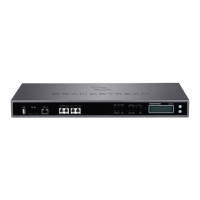
